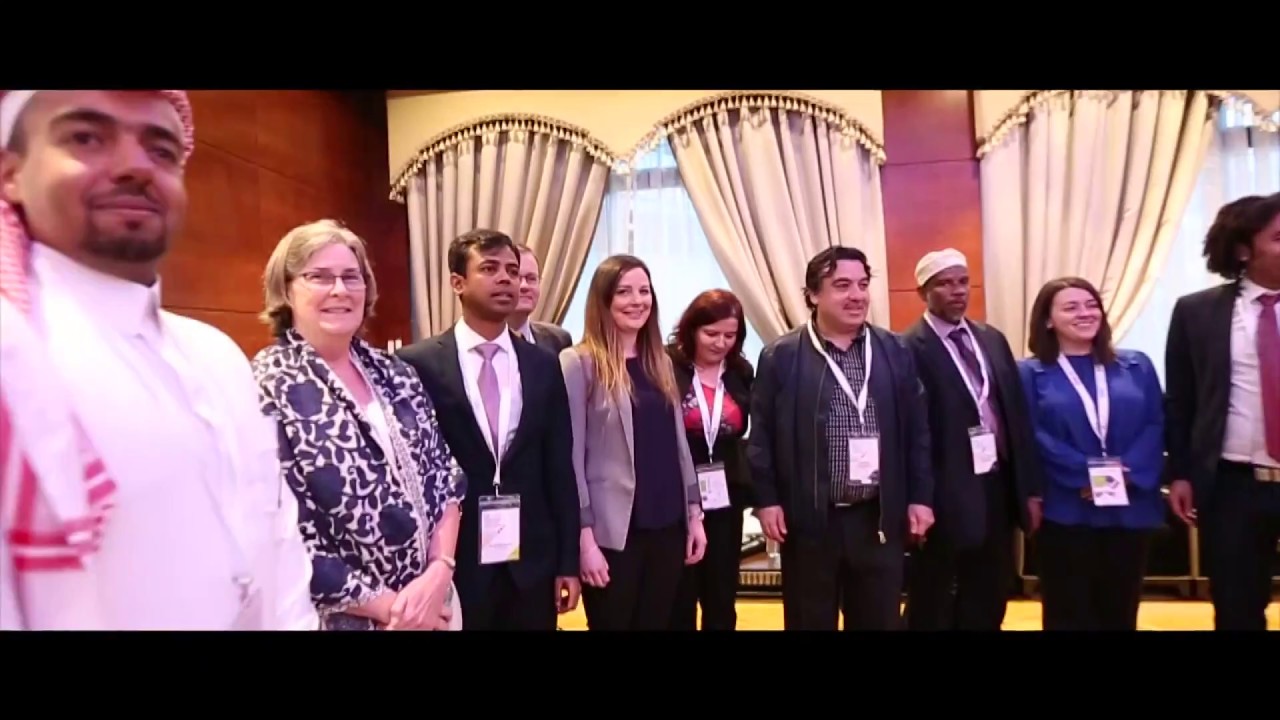
Using a project-based practical approach to better engage students in an academic KM course
Introduction
I have been teaching KM (Knowledge Management) in the Department of Industrial Engineering and Management at Ben Gurion University since 2010. KM is an elective, one-semester course, not a major compulsory course. One of the parameters students use to choose an elective course is the relative amount of work it involves, especially in the middle of the semester. Therefore, during the semester, the students are required to perform just a few small tasks such as composing blog posts on issues discussed in class and opening LinkedIn accounts with good profiles and a minimum number of connections. The final grade was composed of the combined score of the small tasks plus a final exam. The exam was a multiple choice one with a relative weight of 70% in the final score. The exam consisted of 40 questions, each with 4 optional answers. The students usually studied a few days before the exam to be familiar with the broad range of materials covered in the course. The benefit of such learning is quite limited, as shown in The Curve of Forgetting1 (Figure 1).

The onset of COVID-19, which required shifting to remote Zoom lectures instead of face-to-face lectures, posed special technical difficulties in performing online exams. I used this opportunity to convince the department to replace the exam with a serious practical assignment. I consulted my colleague Dr. Moria Levy who teaches KM in the information department at Bar Ilan University, Israel regarding the appropriate nature of the assignment. Dr. Levy gives her students an assignment to identify an organization’s knowledge needs, analyze these needs, prioritize the organizational efforts based on some models taught in class, and choose the first KM activities to be applied in the organization. She asks her students to describe the outline of a KM solution, for the chosen need, and to add an agile activity that will be implemented in parallel, demonstrating KM’s value quickly.
I used her idea and created a similar assignment for my students, to be performed at their workplaces. Detailed descriptions of the assignment and actual results are presented in the following sections.
Audit methodology
The end goal is to identify knowledge issues that if fixed, would improve a business process or benefit the organization in some observable (preferably, but not necessarily, measurable) way.
K-mapping can be done by considering a known problem that reduces the organization’s ability to achieve its goals. Typical examples: a decrease in profitability, loss of markets, decrease in productivity, difficulties in complying with regulations, departure of key personnel (loss of critical knowledge), etc.
The assignment is to identify knowledge-related business problems, and for each one list the problematic factors such as lack of knowledge to perform a task, barriers to the flow of knowledge, or difficulty in obtaining knowledge from within the organization or from the outside.
It is recommended to examine business processes that are on the one hand important to the organization and on the other hand known to be problematic.
For each process, the current state and the desired state must be described along with the benefit that will accrue to the organization from the transition to the desired state. A flowchart of the process can help focus on the important issues.
Sample relevant questions for each process:
- Do the employees have all the necessary knowledge to perform their tasks?
- Does this knowledge include explicit knowledge (documents) and if so, do they know how to retrieve it, and if they know – can they access the documents?
- Are there knowledge access problems due to need-to-know culture2?
- Is there any difficulty in receiving information and knowledge from workers in other departments?
- Does the process depend on the expertise/knowledge of a single employee?
- Where do the employees obtain the knowledge that they need?
- Whom can an employee consult to help solve a problem?
- Does the execution of the process depend on the knowledge of relevant parties (suppliers, third-party companies, service providers)?
- The criticality of specific knowledge – what cannot be done if the knowledge disappears?
- What interferes with, or is missing from the execution of the tasks?
- How is daily life conducted concerning information and knowledge?
- What is the level of turnover of people in a position?
- What are the minimum requirements for new candidates for the position and how and for how long does a new person need to be trained?
- Is there mutual trust and knowledge sharing with people involved in the process (from the same unit or with people from other units)?
- What is the technological infrastructure, and does it meet / not meet the needs?
- If the process includes sections based on formal knowledge:
- Are all procedures/work instructions known to those who use them?
- Does document search locate the latest version by default?
- Are the formal documents updated and how?
- Is accessing the relevant documentation easy?
For all cases, it is important for students to engage the assessment of the IT department regarding the capacity of the existing systems, and which new systems can be integrated with the existing ones or replace the systems that are currently in use. IT staff can be of great help or great hindrance, so students are advised that it is important to make sure that they will be by their side in the case of actual implementation.
If the students propose to purchase a system, they should list the functionality that this system will provide (in response to the needs), whether can it be operated in conjunction with other systems that already exist in the organization, what are the interfaces to these systems and which existing systems should be decommissioned when the new one is implemented. The costs should include external (software, licenses, consulting, maintenance) and internal (work instructions, adaptation, help, etc.
It is highly recommended for students to perform the mapping process using the design thinking methodology3.
Defining solutions to the knowledge issues and guidelines for recommending a pilot
In this section, the students are required to describe in detail the solution that they suggest to each knowledge issue and to choose the most appropriate solution for a pilot. The choice is based on weighing 5 major parameters of the implementation:
A – business added value
B – cost (including direct and indirect costs)
C – urgency
D – probability of success
E – time frame.
Each parameter is given a score on a scale of 1 -10 and the weighing formula is T = A – B + 0.5C + 0.5D – 0.5E.
A and C should preferably be determined (or at least confirmed) by a relatively high-ranking manager (depending on the organization type).
B: If the recommendation is to purchase and implement a new system, then a few options should be considered.
D depends mainly on the following:
- Management commitment, backing, and providing the necessary resources.
- Personal user experience benefits to the worker such as easier and faster retrieval of required documents, easier and faster onboarding.
- Requirements for culture change.
- Cooperation level of other departments, such as IT, QA, or HR.
Results
The KM course is taken by 4th-year B.Sc. students and by M.Sc. students in industrial engineering. The B.Sc. students work only part-time, usually one day a week, while the M.Sc. work full time, and their employer pays for their studies and gives them a full day off for attending lectures and completing their chores. Not all students could perform the K-audit assignment and were given a theoretical work task instead. The transition from an exam to an assignment started in the previous academic year in which 34 B.Sc. and 20 M.Sc. students performed K-audit assignments. In the current academic year, the number grew to 46 B.Sc. and 21 M.Sc. students, a total of 121 in both years.
The workplaces were of various characteristics: hi-tech industries, low-tech industries, pharma, fintech, government, food, and more.
The accumulated main pain issues reported in the assignments as causing performance problems were:
- 36 students mentioned the problem of onboarding new employees. The issue was manifested in two facets. One was difficulty for current workers to allocate time to overlap and share knowledge with the newcomers, or to serve as mentors or buddies in order to transfer as much tacit knowledge as possible. The second was the need for complete job-overlap folders (a set of documents that includes all relevant information and data), which was regarded as a very important aid for new employees in their new assignments.
- 23 students found unsatisfactory knowledge sharing.
- 22 mentioned issues of knowledge flow and accessibility, 19 found insufficient documentation.
- 19 students complained of synchronization problems among the various platforms used in their organization.
- 8 students found unsatisfactory knowledge preservation. 8 students thought that they need task tracking.
- 3 students required fault tracking.
The students expressed gre3 in their actual work environment and provided field experience they otherwise would not achieve. In some cases, the students involved the management in their findings. In this respect, the last M.Sc. course was a great success, far beyond expectations. 21 students took this assignment. In 7 cases the pilot that the student recommended was actually implemented (at least started), and in 6 other cases, the management decided to allocate the required resources and implement the solution shortly. It should be noted that there is no follow-up and the data presented here is based only on the assignments “as submitted”.
Examples
All of the following examples have been extracted from the assignments “as is” and translated to English without any modification or correction. The workplace names are not given for confidentiality reasons.
Case A – pharma manufacturer/vendor
| Problem/need | Solution |
| High mobility of employees and non-existence of a “retirement folder” | Preparation of “retiree folders” |
| Classification and validation of changes | A system for classifying changes including all the information required to validate the change |
| Difficulty in finding relevant information | 1. Clear procedures for preserving knowledge 2. Knowledge management system |
| Lengthy and cumbersome process of signing documents | Standardizing a process for electronically signing documents |
The solution that was selected for the pilot was a process for electronically signing documents.
At the beginning of June, we started implementing the solution for the document signing process, a presentation was delivered to all departments in the plant, and training was carried out by key personnel in each field and department.
Internal departmental discussions were held – how to divide work properly (distribution of preparations, who is allowed to approve, etc.)
By mid-July, the validity of the change will come into effect – meaning that every document will be approved within two weeks.
“Improving document signing” forum meetings will be held – to discuss challenges, provide solutions, and the accuracy of the process.
A factory tracking file will be established (the status of a document at any given moment) that will be distributed by email once a month for tracking purposes.
Step-wise Implementation marathon – each time focusing on a single type such as procedure updates, monographs, manufacturing, packaging and packaging materials, raw materials, pharmacopeia, etc.
Responsibilities:
- The initiator of the change
- Preparations (availability of supporting information, paperwork, who approves, etc.)
- Presence during the marathon – immediate response to questions and corrections
- Relevant approvers
- Full availability during the marathon
- Managers/team leaders
- Availability for a professional response if necessary.
Case B – Investment company
| Problem/need | Solution |
| Ability to locate the necessary information simply with no need for physical access | Using cloud-based tools for the storage, and sharing of information |
| Improving customer relations resulting from the preservation and organization of previous information (conversations, requests, inquiries, solutions, etc.) | implementing a CRM (Customer relationship management) system to manage communications with the customer |
| Improving customer relations resulting from the representation of the client’s account status in digital form, convenient and easy to access | Establishing an investor portal that includes a personal area where account status can be viewed |
| Improvement of customer relations resulting from shorter and more convenient signing processes | Implementation of a digital signature system (E-Sign) |
| Improving the monitoring and control of tasks | Implementation of a tasks managing and monitoring tool |
The investment company understood that to optimize processes and even expand at the business level, it is necessary to move from outdated and manual knowledge management methods to more advanced methods.
Many tools and solutions make it possible to improve the existing situation, as presented in this document, but it is important to place a central emphasis on the organizational culture that is required to adapt itself to work with these tools. Adapting and assimilating the organizational culture should work in both directions:
Bottom-up – the employees should understand and feel the benefit they derive from correct knowledge management and thus strive to continue and cultivate those new processes.
Top-down – the management should emphasize the issue, recognize and talk about its importance and slowly make it a daily routine.
The recommendation is to simultaneously start with two projects – the establishment of a SharePoint system together with a Monday.com task tracking system. It is important to define a work plan that continues beyond that and will include the other important projects with lesser priority.
The connection and involvement of the company’s CEO in the process of mapping and recommendations made within the framework of this document are worthy of appreciation and increase the chances of the project’s success.
Case C – Global manufacturer
| Problem/need | Solution |
| Great difficulty in finding relevant knowledge | Assigning an employee in each area who will be responsible for managing the knowledge |
| Tacit knowledge of veteran experts is not passed on | Schedule routine weekly training Build a “departure” overlap folder for veteran employees |
| Lack of documentation of problem-solving and malfunctions | Set up a documentation folder in Sharepoint |
| Lack of knowledge sharing between employees | Setup a shared folder in Teams for updates and communication |
| Lack of knowledge sharing with the manufacturing plants abroad | Replace email correspondence by Teams |
| The main problem: multiple systems | Creating one unified system that automatically accumulates and presents the relevant information from the most important systems |
The multiplicity of systems causes disorder and discomfort and significantly lengthens the time required to perform a certain task (unnecessary waste of time), and also makes it difficult to decipher and analyze the information required to solve the problems. Often things are missed when the relevant data are located in different systems which are not always simultaneously open. By the time you retrieve the information in a certain system, you’ve already forgotten what you saw in another system.
We decided to create a dynamic system where all the information is presented in one place and also use various filters for troubleshooting by matching checks, tracking the machines, and more.
To build the system, my manager assigned me to a veteran engineer for experienced in creating queries and reports using the SQL system. I did the initial thinking by myself: which relevant systems do I wish to retrieve the information from, which parameters interest me, which relevant statistics, what would I like to see in the interface – what is more important than what is less important, and more.
The system was built in two and a half weeks. We gave minimal daily responses to the machines and used the other engineers for reinforcement and support. We built the initial system for a certain machine in a thorough and long way (about two and a half weeks as mentioned). Once the system worked properly for a certain machine, it took a day or two to adapt it to another machine.
Conclusion
The main goal of the KM course, to methodically introduce the students to knowledge management issues and provide them with practical tools for use in their workplace, was achieved beyond expectations.
Further planned improvement would be presentations in class of selected assignments.
Acknowledgements: I thank Stephanie Barnes and Dr. Vincent Ribiere for their helpful recommendations.
Header image source: Glenn Carstens-Peters on Unsplash.
References:
- Roth, J. (n.d.), The Curve of Forgetting. Jim Roth’s Web Site, Spokane Community College. ↩
- Dawes, S. S., Cresswell, A. M., & Pardo, T. A. (2009). From “need to know” to “need to share”: Tangled problems, information boundaries, and the building of public sector knowledge networks. Public administration review, 69(3), 392-402. ↩
- Miron, E. (2022, May 9). Knowledge-focused design thinking. RealKM Magazine. ↩






